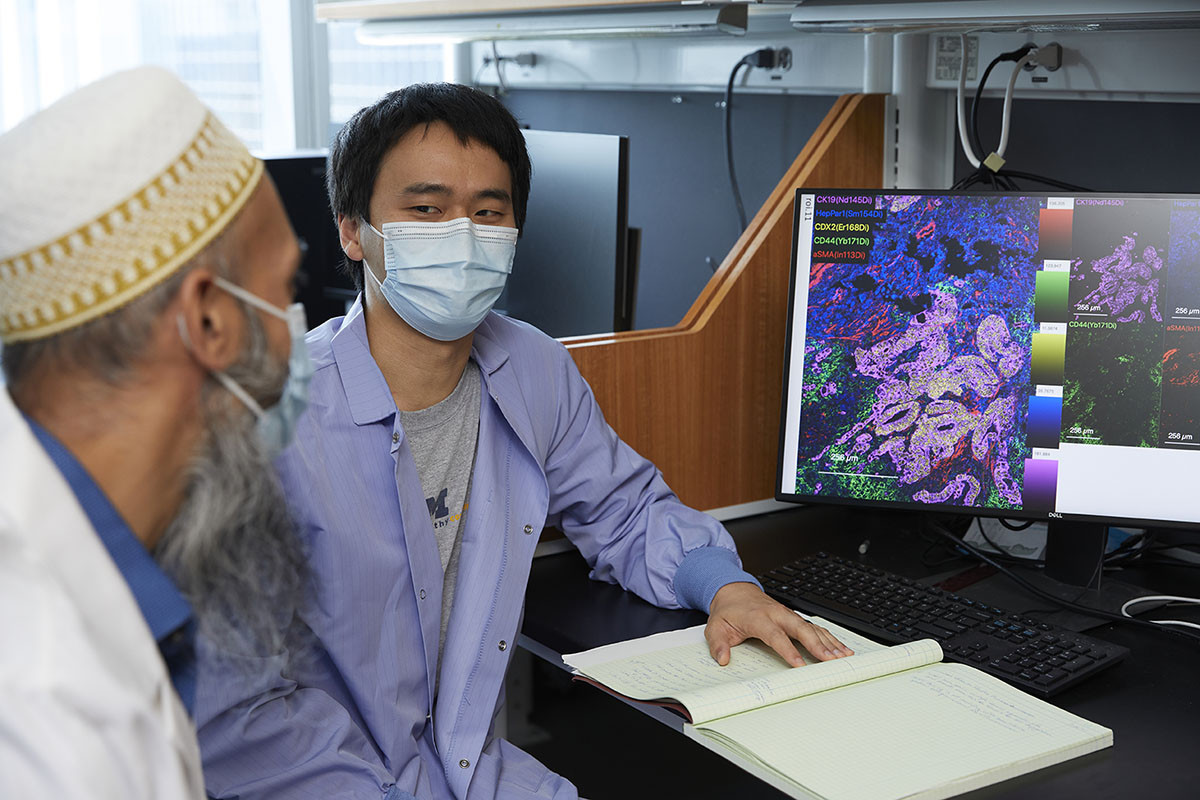Ke Cheng, the Randall B. Terry Jr. Distinguished Professor in Regenerative Medicine at NC State and a professor in the NC State/UNC-Chapel Hill Joint Department of Biomedical Engineering, along with colleagues from UNC-Chapel Hill and Duke University, led the development of the vaccine prototype from proof-of-concept to animal studies.
“There are several challenges associated with vaccine delivery we wanted to address,” Cheng says. “First, taking the vaccine via intramuscular shot is less efficient at getting it into the pulmonary system, and so can limit its efficacy. Inhaled vaccines would increase their benefit against COVID-19.
“Second, mRNA vaccines in their current formulation require cold storage and trained medical personnel to deliver them. A vaccine that is stable at room temperature and that could be self-administered would greatly reduce wait times for patients as well as stress on the medical profession during a pandemic. However, reformulating the delivery mechanism is necessary for it to work through inhalation.”
In order to deliver the vaccine directly to the lungs, the researchers used exosomes (Exo) secreted from lung spheroid cells (LSCs). Exosomes are nanosized vesicles that have recently been recognized as an excellent means of drug delivery.
First, the researchers looked at whether LSC-Exo was able to deliver protein or mRNA “cargos” throughout the lungs. The researchers compared the distribution and retention of LSC-Exo to nanoparticles similar to lipid nanoparticles currently used with mRNA vaccines. In a paper in Extracellular Vesicle, the researchers demonstrated that lung-derived nanoparticles were more effective at delivering mRNA and protein cargo to bronchioles and deep lung tissue than synthetic liposome particles.
Next, the researchers created and tested an inhalable, protein-based, virus-like particle (VLP) vaccine by decorating the exterior of LSC-Exo with a portion of the spike protein – known as the receptor binding domain, or RBD – from the SARS-CoV-2 virus. A paper describing the research is published in Nature Biomedical Engineering.
“Vaccines can work through various means,” Cheng says. “For example, mRNA vaccines deliver a script to your cell that instructs it to produce antibodies to the spike protein. This VLP vaccine, on the other hand, introduces a portion of the spike protein to the body, triggering the immune system to produce antibodies to the spike protein.”
In rodent models, the RBD-decorated LSC-Exo vaccine (RBD-Exo) elicited production of antibodies specific to the RBD, and protected the rodents, after two vaccine doses, from infection with live SARS-CoV-2. Additionally, the RBD-Exo vaccine remained stable at room temperature for three months.
The researchers note that while the work is promising, there are still challenges associated with large-scale production and purification of the exosomes. LSCs, the cell type used for generating RBD-Exo, are currently in a Phase I clinical trial by the same researchers for treating patients with degenerative lung diseases.
“An inhalable vaccine will confer both mucosal and systemic immunity, it’s more convenient to store and distribute, and could be self-administered on a large scale,” Cheng says. “So while there are still challenges associated with scaling up production, we believe that this is a promising vaccine worthy of further research and development.”
The work was supported by the National Institutes of Health and the American Heart Association. North Carolina State University has filed a provisional patent on the technologies reported in those publications and the patent right has been exclusively licensed to Xsome Biotech, an NC State startup company co-founded by Cheng.
-peake-
Note to editors: Abstracts follow.
“Exosomes decorated with a recombinant SARS-CoV-2 receptor-binding domain as an inhalable COVID-19 vaccine”
DOI: 10.1038/s41551-022-00902-5
Authors: Zhenzhen Wang, Dashuai Zhu, Xianyun Wang, Mengrui Liu, Zhenhua Li, Ke Cheng, Department of Molecular Biomedical Sciences, North Carolina State University and the Joint Department of Biomedical Engineering, University of North Carolina at Chapel Hill and North Carolina State University; Kristen D. Popowski, Blanca López de Juan Abad, Halle Lutz, Phuong-Uyen C. Dinh, Department of Molecular Biomedical Sciences, North Carolina State University; Nicole De Naeyer, C. Todd DeMarco, Thomas N. Denny, Duke University
Published: July 4, 2022 in Nature Biomedical Engineering
Abstract:
The first two mRNA vaccines against infection by severe acute respiratory syndrome coronavirus 2 (SARS-CoV-2) that were approved by regulators require a cold chain, and were designed to elicit systemic immunity via intramuscular injection. Here we report the design and preclinical testing of an inhalable virus-like-particle as a COVID-19 vaccine that, after lyophilization, is stable at room temperature for over three months. The vaccine consists of a recombinant SARS-CoV-2 receptor-binding domain (RBD) conjugated to lung-derived exosomes, which, with respect to liposomes, enhance the retention of the RBD in both the mucus-lined respiratory airway and in lung parenchyma. In mice, the vaccine elicited RBD-specific IgG antibodies, mucosal IgA responses and CD4+ and CD8+ T cells with a Th1-like cytokine expression profile in the animals’ lungs, and cleared them of SARS-CoV-2 pseudovirus after a challenge. In hamsters, two doses of the vaccine attenuated severe pneumonia and reduced inflammatory infiltrates after a challenge with live SARS-CoV-2. Inhalable and room-temperature-stable virus-like particles may become promising vaccine candidates.
“Inhalable exosomes outperform liposomes as mRNA and protein drug carriers to the lung”
DOI: 10.1016/j.vesic.2022.100002
Authors: Kristen D. Popowski, Blanca López de Juan Abad, Arianna George, Dylan Silkstone, Elizabeth Belcher, Jaewook Chung, Asma Ghodsi, Halle Lutz, Jada Davenport, Mallory Flanagan, Jorge Piedrahita, Phuong-Uyen C. Dinh, Ke Cheng, North Carolina State University
Published: Online June 16, 2022 in Extracellular Vesicle
Abstract: Respiratory diseases are among the leading causes of morbidity and mortality worldwide, coupled with the ongoing coronavirus disease 2019 (COVID-19) pandemic. mRNA lipid nanoparticle (LNP) vaccines have been developed, but their intramuscular delivery limits pulmonary bioavailability. Inhalation of nanoparticle therapeutics offers localized drug delivery that minimizes off targeted adverse effects and has greater patient compliance. However, LNP platforms require extensive reformulation for inhaled delivery. Lung-derived extracellular vesicles (Lung-Exo) offer a biological nanoparticle alternative that is naturally optimized for mRNA translation and delivery to pulmonary cells. We compared the biodistribution of Lung-Exo against commercially standard biological extracellular vesicles (HEK-Exo) and LNPs (Lipo), where Lung-Exo exhibited superior mRNA and protein cargo distribution to and retention in the bronchioles and parenchyma following nebulization administration. This suggests that inhaled Lung-Exo can deliver mRNA and protein drugs with enhanced pulmonary bioavailability and therapeutic efficacy.


